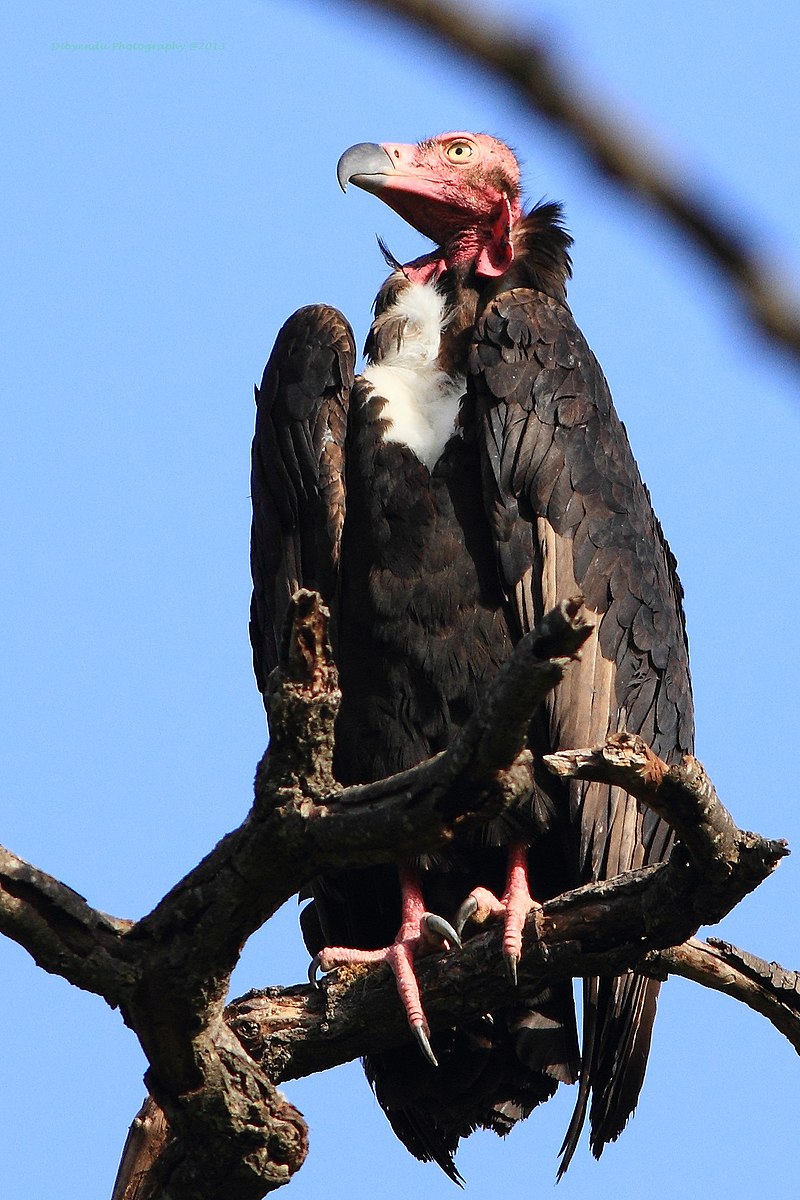
Red-headed Vulture
 The red-headed vulture is very similar in appearance to its larger relative the Lappet-faced vulture in Africa and Arabia, even being historically placed in the genus Torgos.
The red-headed vulture is very similar in appearance to its larger relative the Lappet-faced vulture in Africa and Arabia, even being historically placed in the genus Torgos.
This gaudy-faced vulture was historically abundant, range widely across the Indian subcontinent, and also eastwards to south-central and south-eastern Asia, extending from India to Singapore. Today the range of the red-headed vulture is localized primarily to northern India. It is usually in open country and in cultivated and semi-desert areas. It is also found in deciduous forests and foothills and river valleys. It is usually found up to an altitude of 3000m from sea level.
The red-headed vulture used to be declining, but only slowly; in 2004 the species was uplisted to near threatened from least concern by the IUCN. The widespread use of the NSAID diclofenac in veterinary medicine in India has caused its population to collapse in recent years, however. Diclofenac is a compound now known to be extremely poisonous to vultures. The red-headed vulture population has essentially halved every other year since the late 1990s, and what once was a plentiful species numbering in the hundreds of thousands has come dangerously close to extinction in less than two decades. Consequently, it was uplisted to critically endangered in the 2007 IUCN Red List.
In 2021, its population was estimated to be between 2500 and 10,000.
Gyps vultures are a species which share habitat, and due to their size, tends to outcompete the area.
There is a wide range of human activities that drive mortality of this species. Should this continue, it is likely that this mortality might push this species towards extinction.










